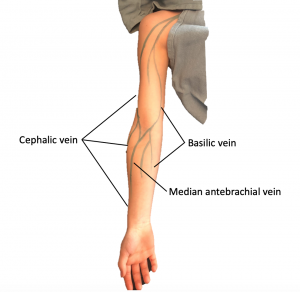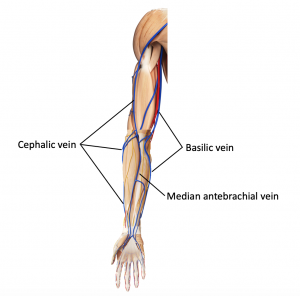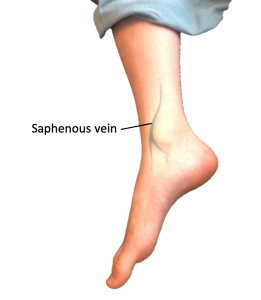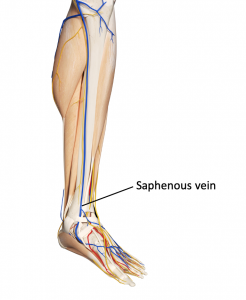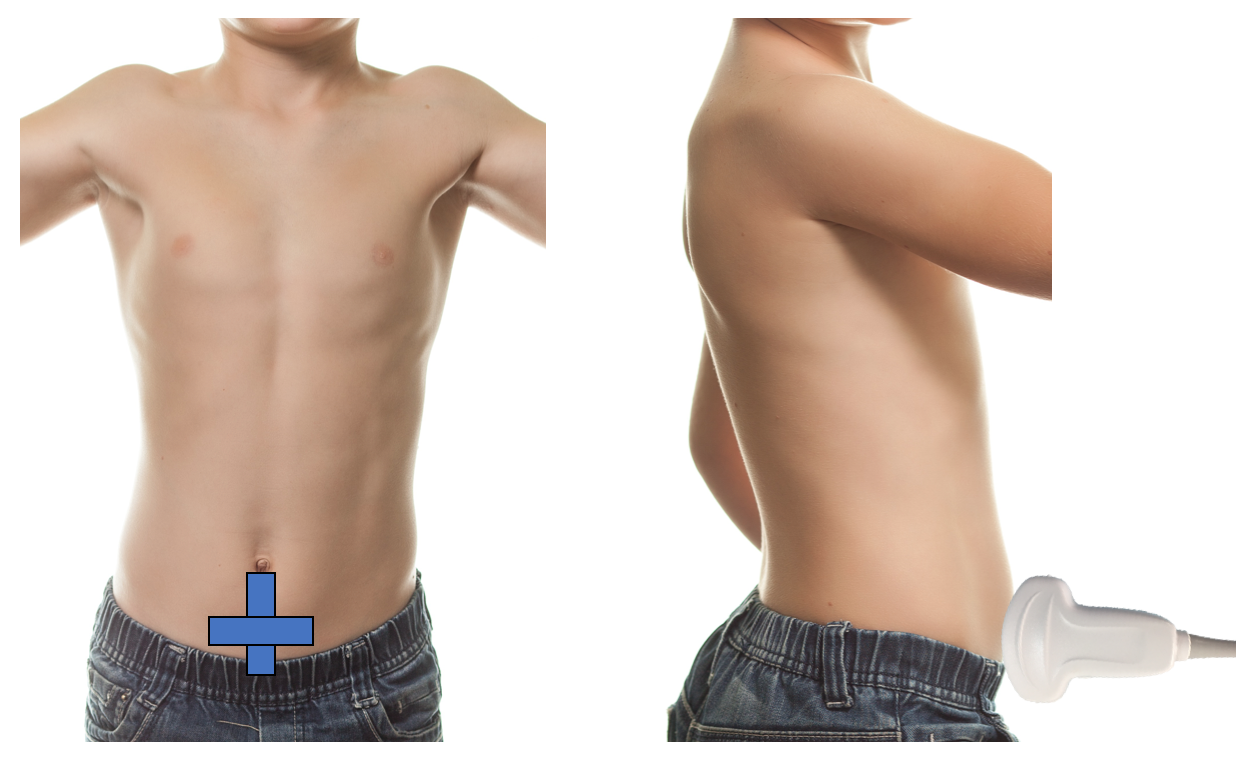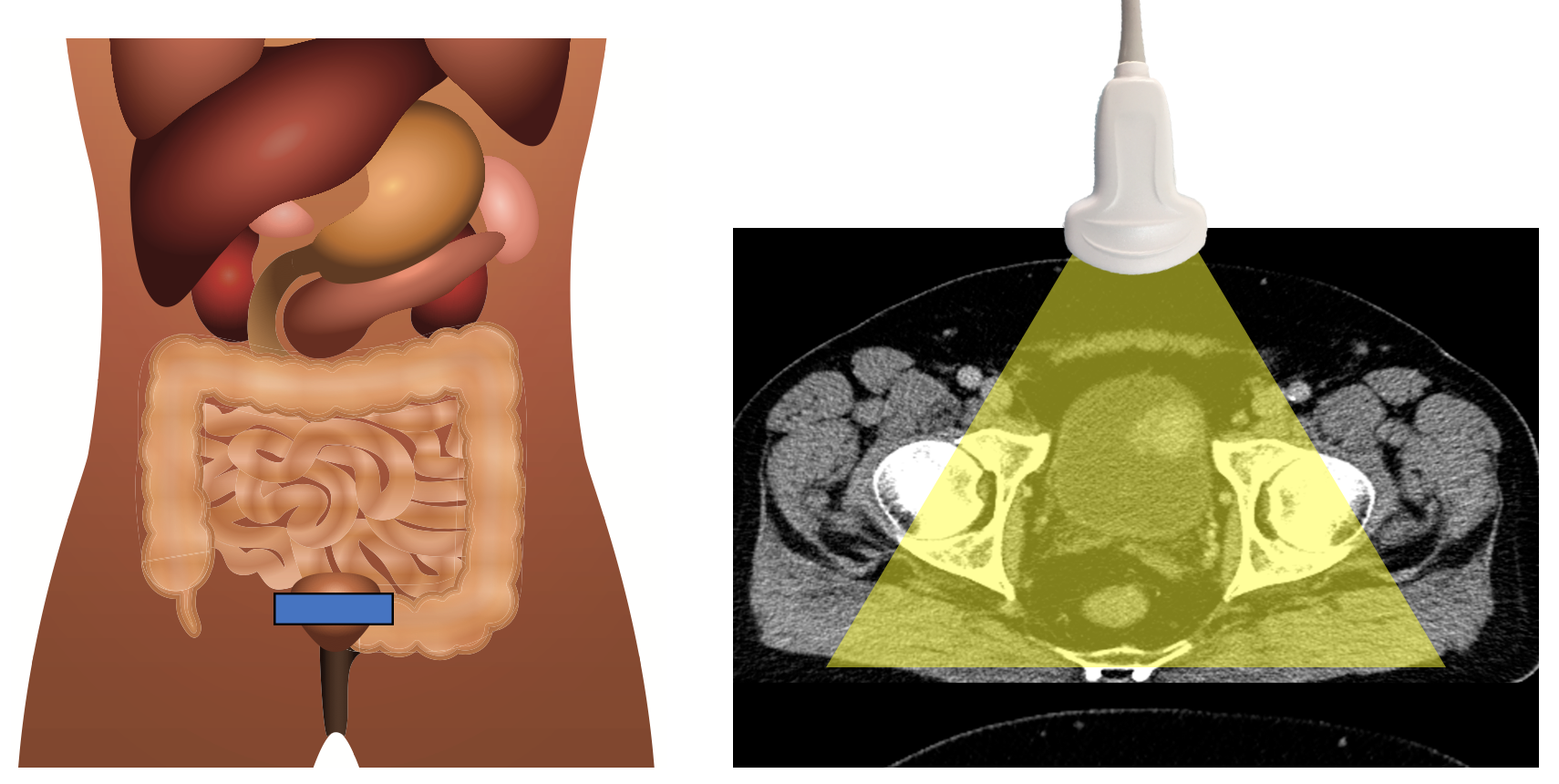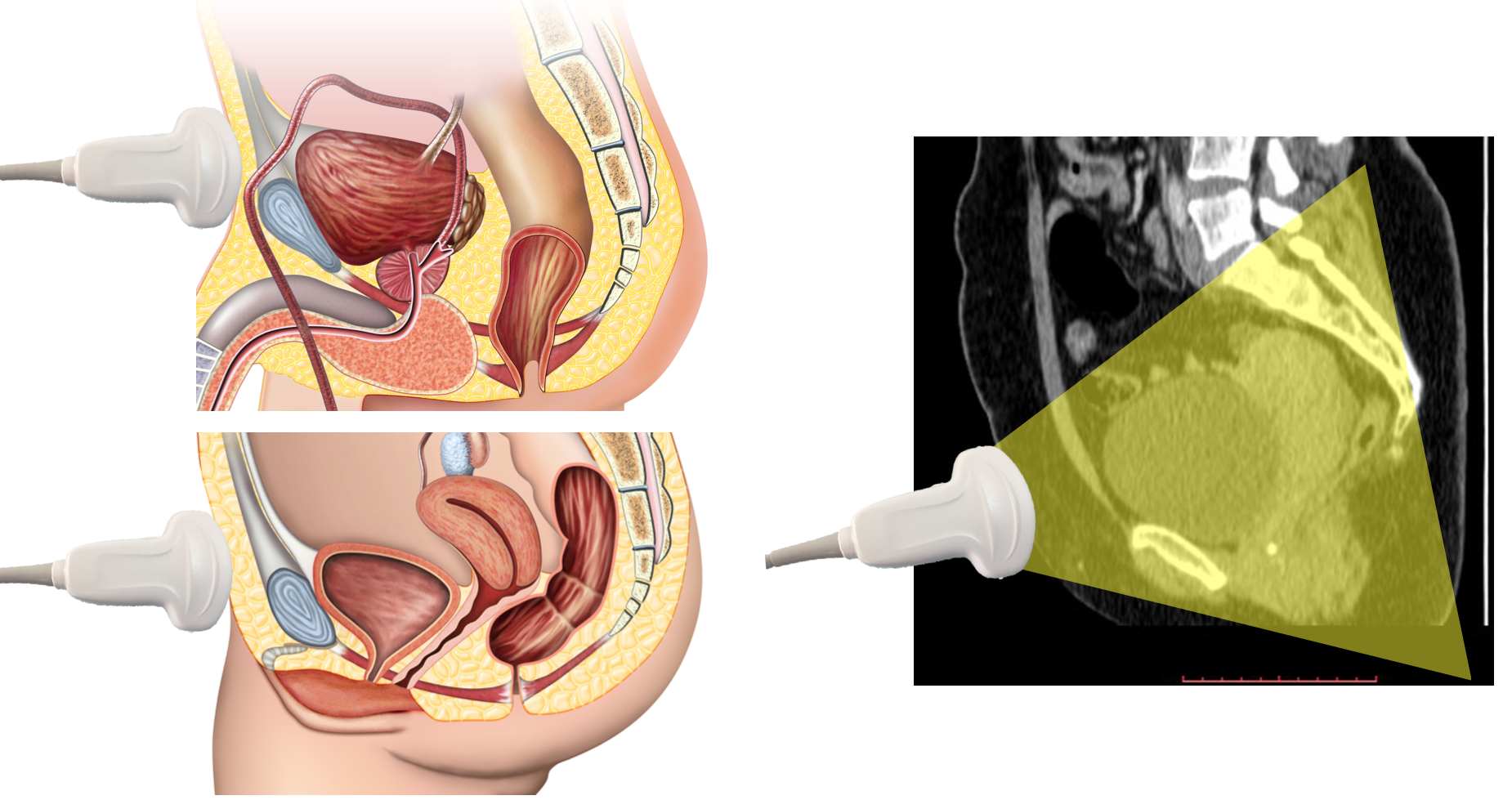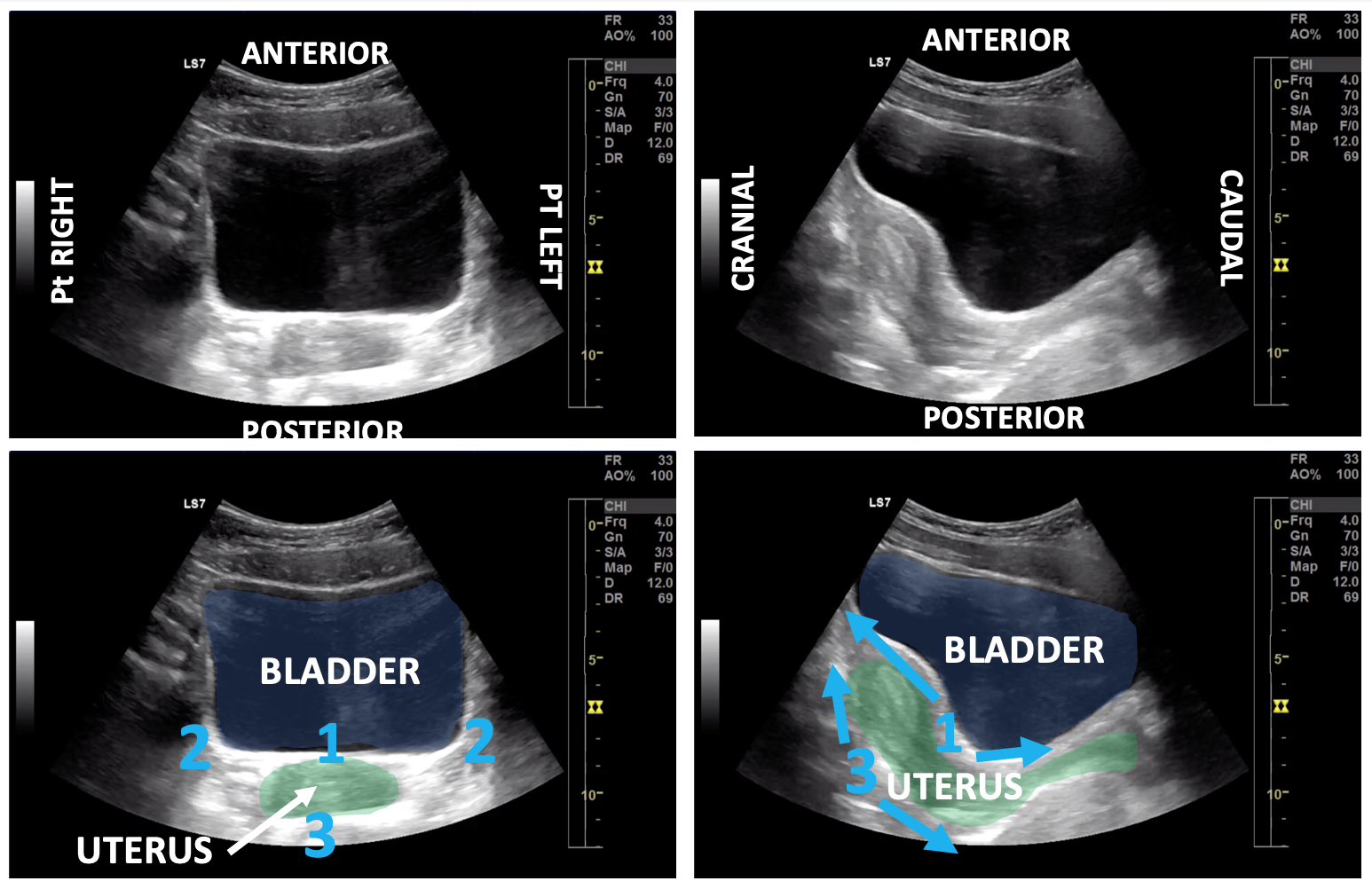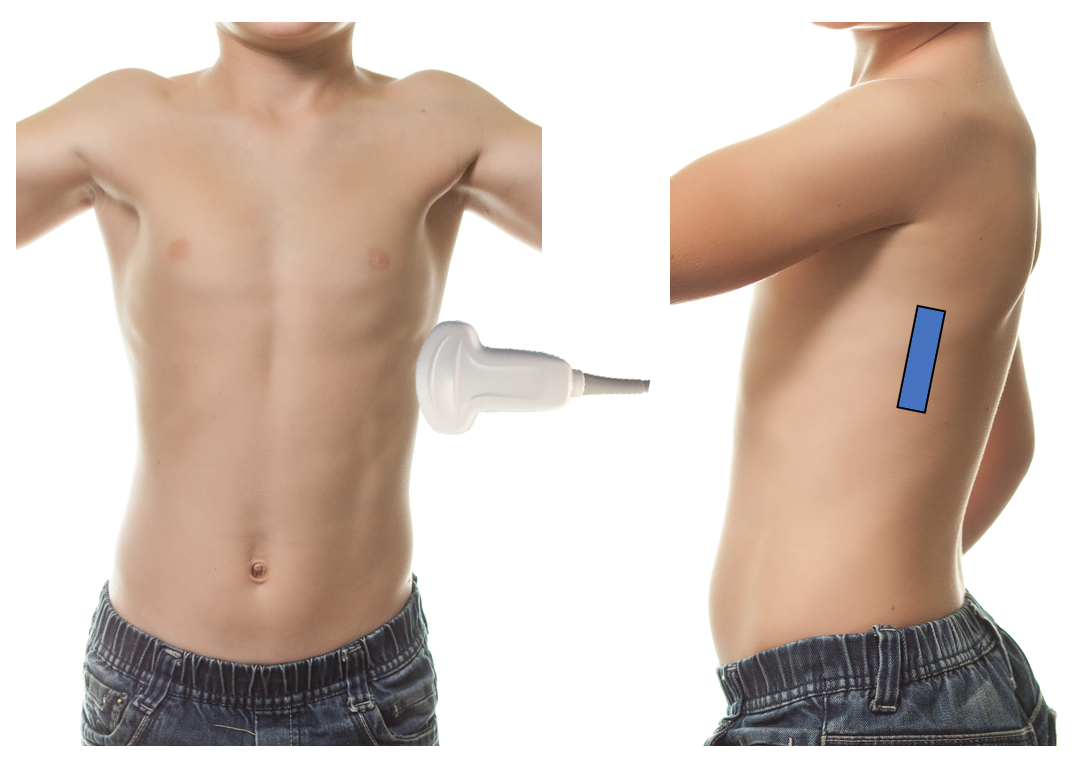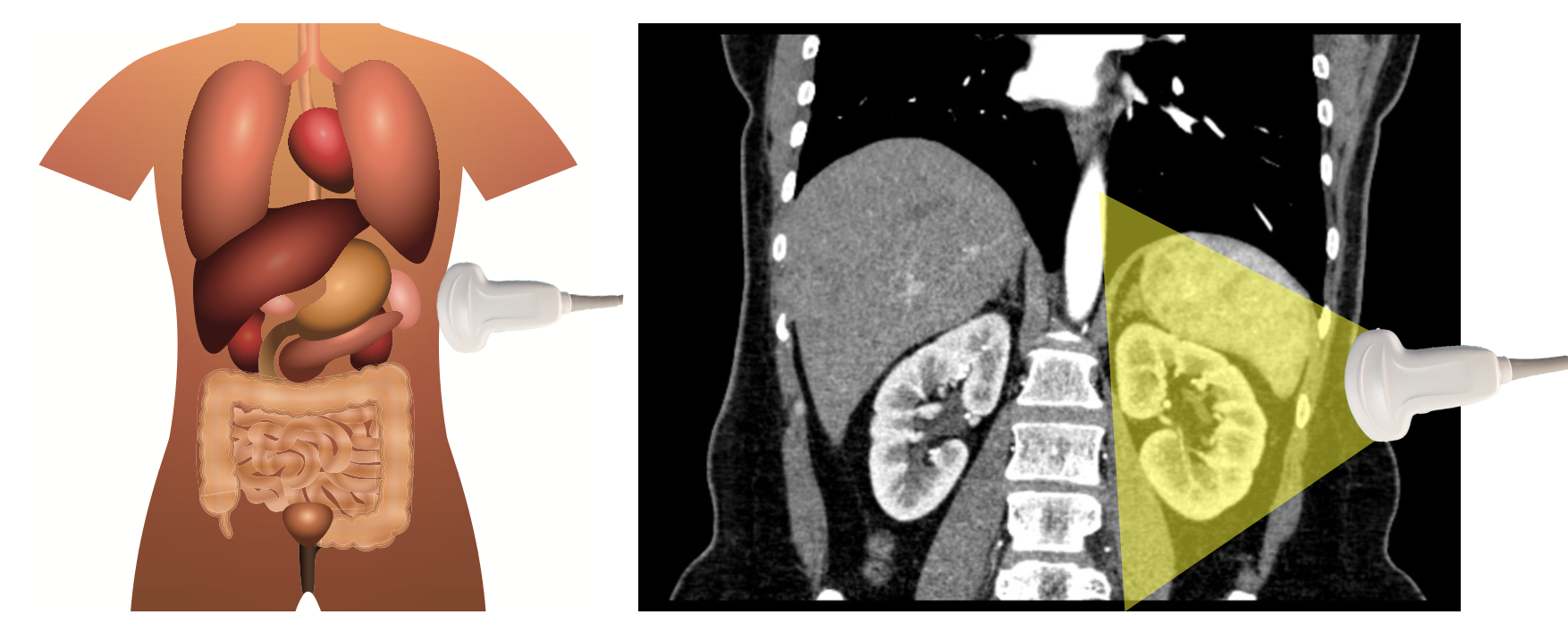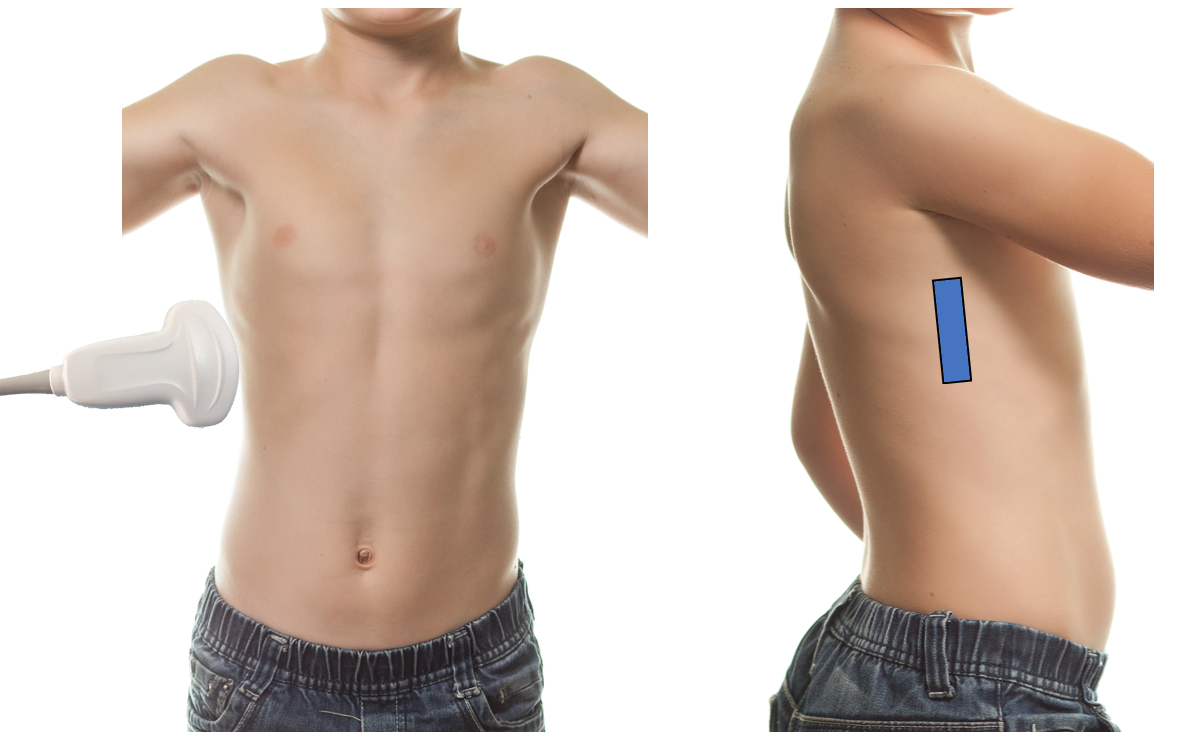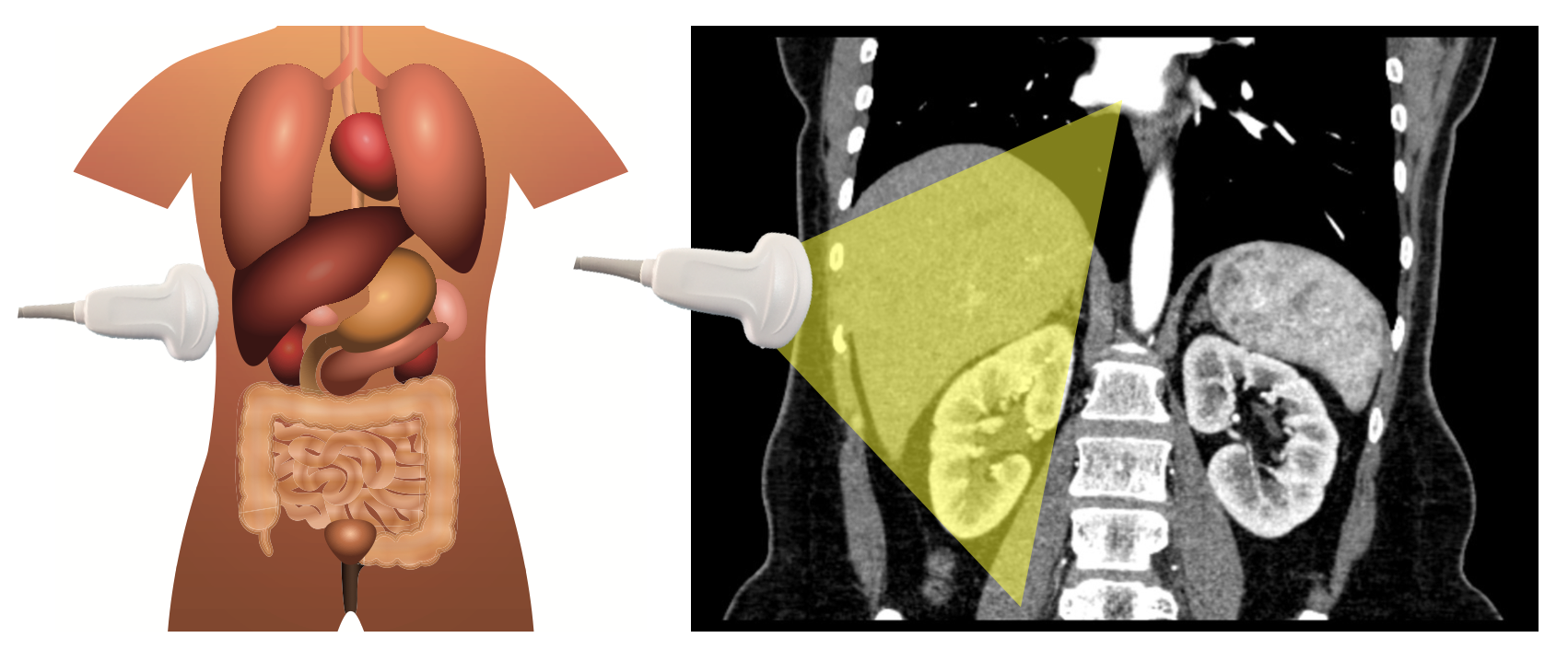Ultrasound anatomy: What Am I Looking At?
Being familiar with the anatomy and trajectory of the veins will aid in their US localization. Vessels are most easily identified in the transverse axis, providing a cross sectional view. They appear as round or oval anechoic (black) structures (figure 5). Following the vessel along its length with the ultrasound ensures it is patent, straight and free of valves and allows for estimation of trajectory to guide needle approach.
Figure 5: Ultrasound appearance of veins
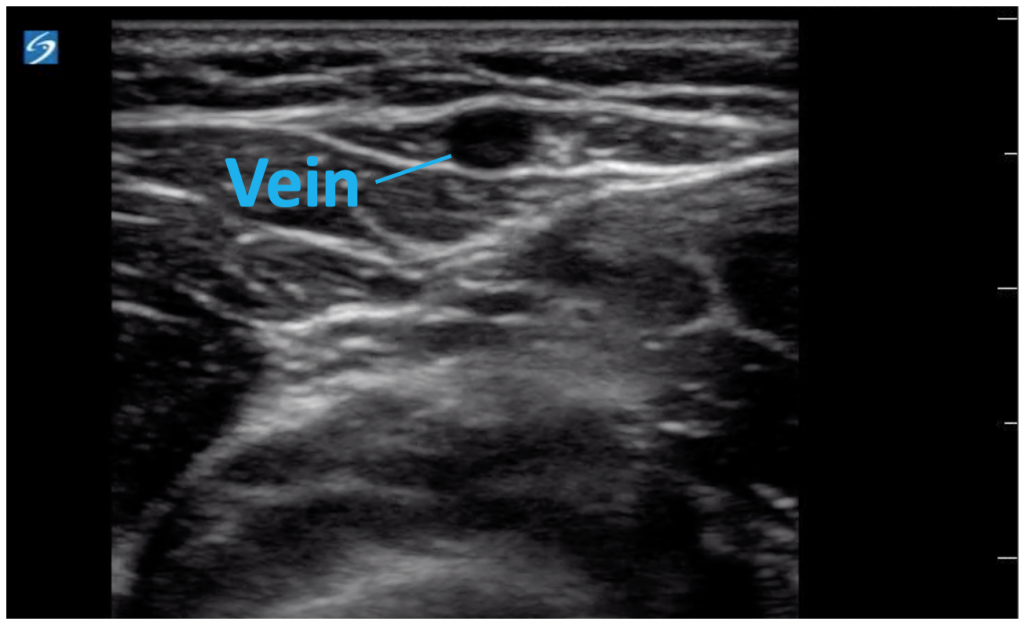
Veins can be differentiated from arteries, which are also round anechoic structures by assessing their relative wall thickness, compressibility, pulsatility and continuous blood flow. Veins are relatively thin walled compared to arteries and are easily compressed when pressure is applied with the transducer—in fact if you are having a difficult time seeing any veins it is often that the superficial veins are being compressed by the probe—a light touch with a braced hand is best. In addition, when pressure is applied with the probe pulsatility of blood flow being transmitted within the vessel can be seen in arteries but not veins (video 1). Some veins near arteries can appear pulsatile due to transmitted movement so the final step in differentiating the two involves using color mode to assess for continuous flow in veins vs pulsatile flow in the arteries (video 2). Be aware that when a tourniquet is up veins often show no flow.
Video 1: Differentiating between veins and arteries on ultrasound: compression technique
Video 2: Differentiating between veins and arteries on ultrasound: color doppler technique
Many children requiring US-guided IV access will have already had multiple attempts, so it is also important to be able to identify a damaged vessel. Other than trying to avoid sites that are visibly bruised, damaged veins can also be identified on ultrasound. Damaged veins can have clot within the vessel which appears as echogenic material in the vessel lumen (figure 6). A clotted vessel is often not fully compressible as well. Other clues include a hematoma around the vessel which appears as a relatively hyperechoic collection next to or surrounding the vessel (figure 7). If you suspect a damaged vessel choose a section of vein proximal to the area or an alternate site.
Figures 6 & 7: US of damaged vessel with clot and surrounding hematoma

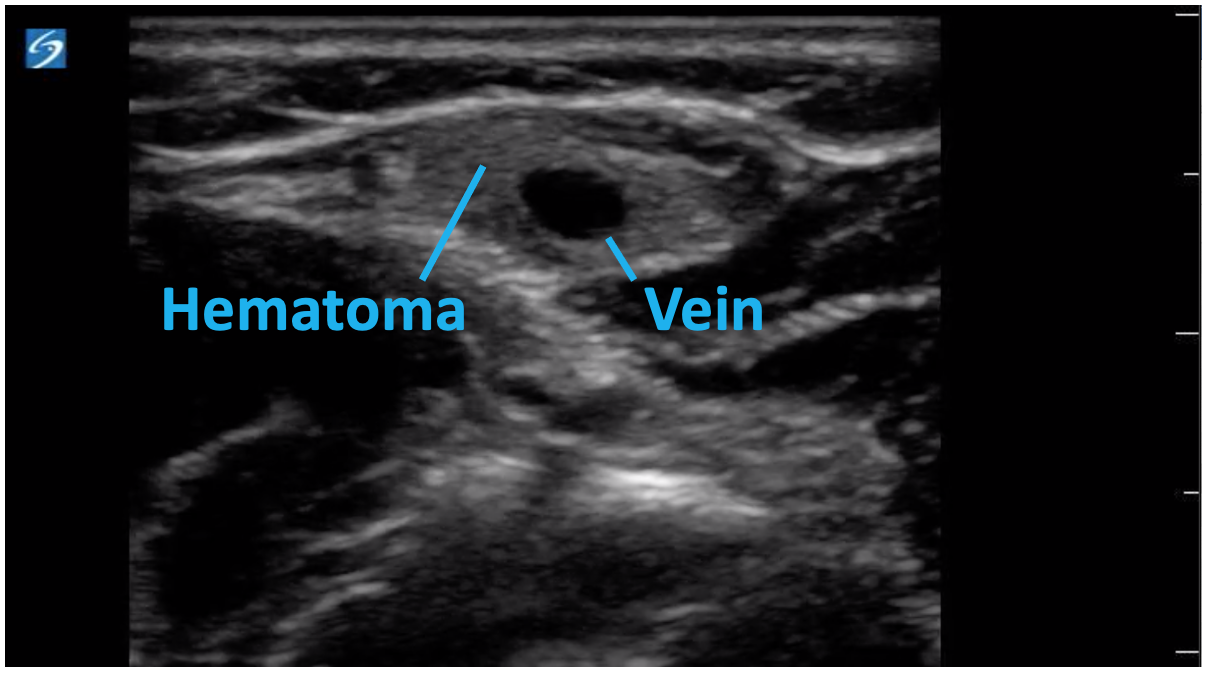
Veins best suited to US-guided catheter placement include those 0.3 to 1.5cm deep, 4mm in diameter with a straight course of at least 1cm in length [12]. Small or superficial veins can be more challenging to identify and cannulate via ultrasound but if successfully placed catheters in small veins have similar longevity to larger ones and those in superficial veins (less that 1.2 cm) have the best longevity and are less prone to dislodgement [12,13]. The relative location to surrounding structures such as arteries, nerves and tendons should also be considered, as they can be injured if in close proximity. It is best to choose a site which is furthest from such key structures.

